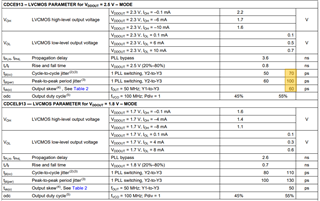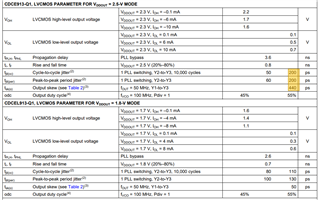Other Parts Discussed in Thread: CDCE913, CDCEL913-Q1
Hi team,
What is the difference between CDCE913-Q1 and non-Q1?
From the datasheet, I’ve found below listed is different:
- Operational temperature
- Thermal parameter
- LVCMOS PARAMETER (e.g. Cycle-to-cycle jitter max)
Is there any other difference? Also, is there any points should be taken care of when replacing CDCE913 with CDCE913-Q1?
Best regards,
Kurumi



